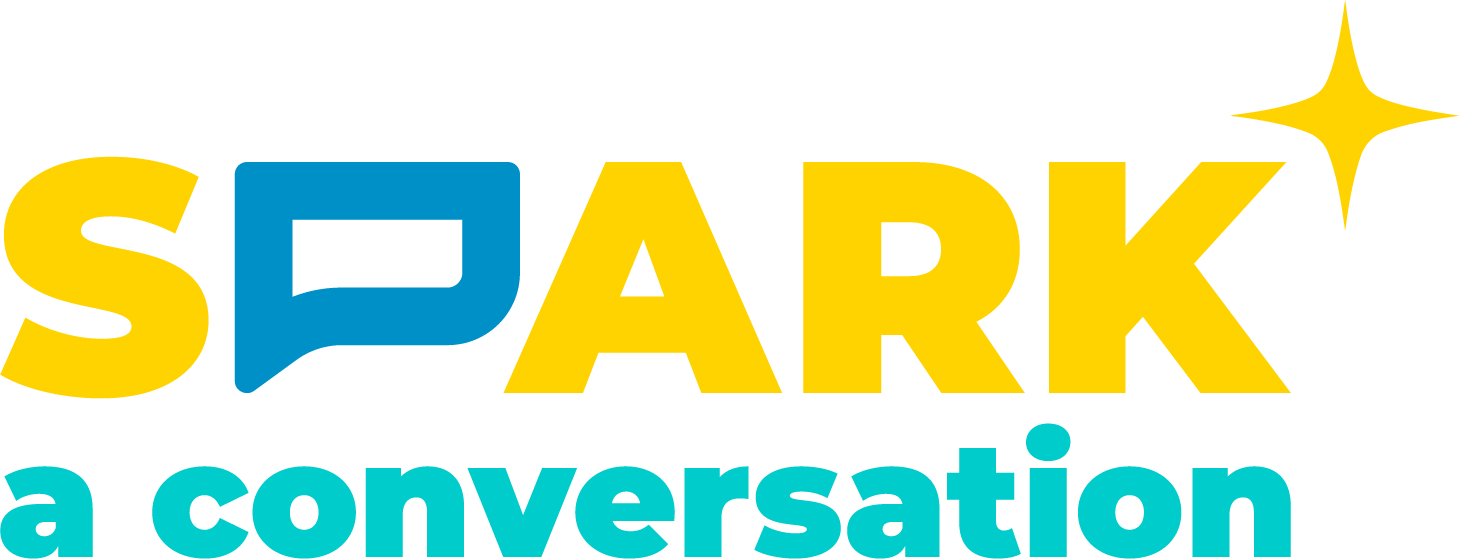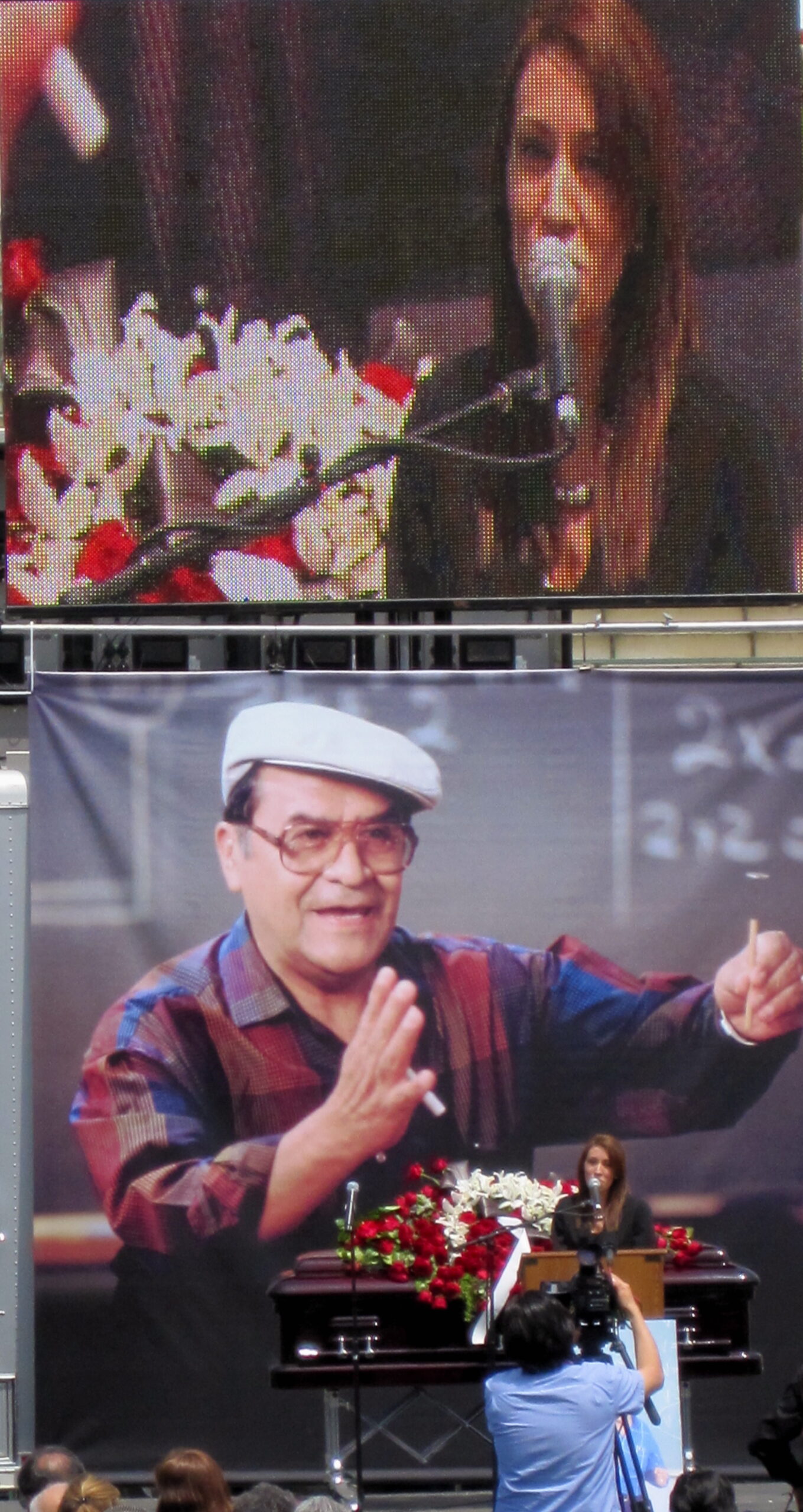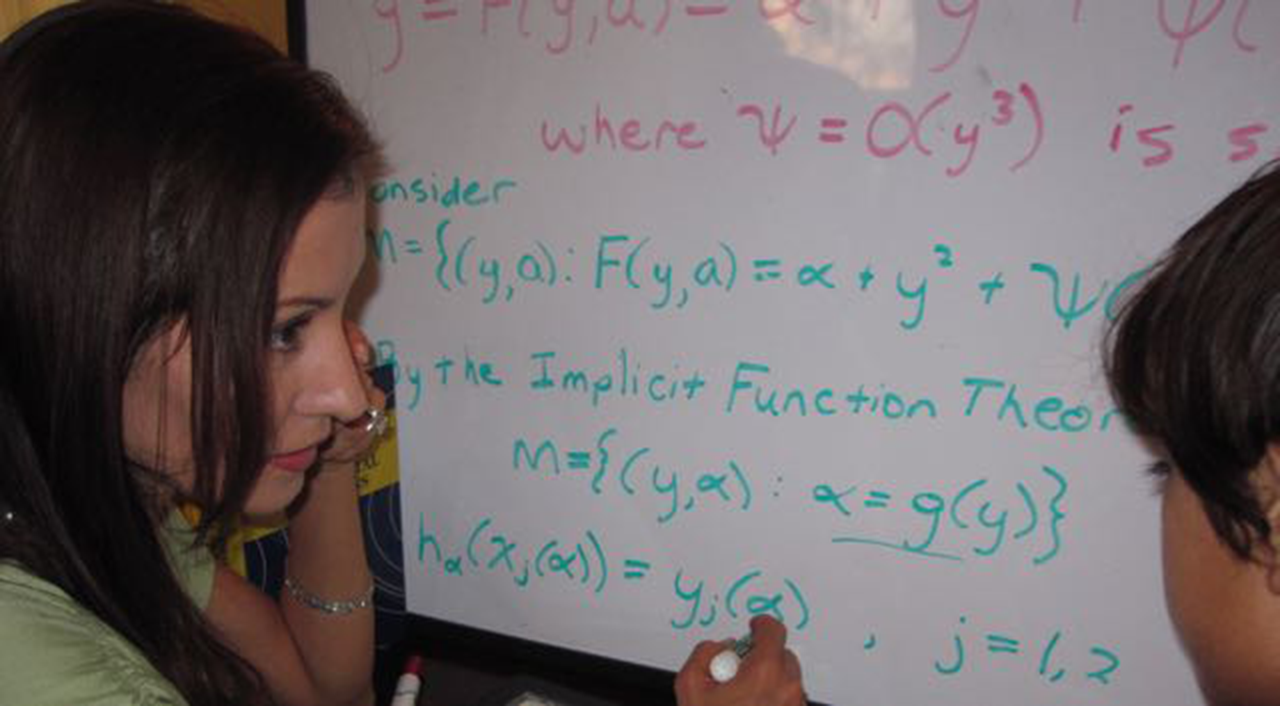
Applied Mathematician Erika Camacho and many other students learned so much from their high school math teacher that some of them were accused of cheating on the AP calculus test.
How did your best teacher inspire you? What did you learn from him/her?
Math helped Applied Mathematician Erika Tatiana Camacho adjust to a new school after her family moved to the United States. Can it also help people see better and limit the recruitment efforts of terrorist groups?
Camacho creates mathematical models to show scientists how the human retina — the part of the eye that contains the cells known as rods and cones — functions. Her work helps doctors improve treatments for the now-incurable disease retinitis pigmentosa.
The eyes of mammals contain photoreceptor cells which absorb light and turn it into electrical signals. Our brains turn those signals into images we can make sense of, allowing us to see the world around us. One kind of photoreceptor, called “rod cells,” lets us see even in dim light. Cone cells, another photoreceptor located in our retinas, work best in bright light, allowing us to see color.
When rods and cones degenerate or decay, our eyesight suffers. People with the genetic disease called retinitis pigmentosa have trouble seeing at night and with their peripheral (side) vision. They can lose their ability to read, walk without help, and recognize the people around them.
Camacho uses math to build models that explain how rods and cones work together and use nutrients like glucose. They are located at the back of the retina, where blood can deliver glucose to them. To picture the relationship between photoreceptors and nutrients like glucose, Camacho suggests that you “think of a bath. You turn on the faucet” to add water to the tub and you might also “allow the water to leak through the drain. How much water is there in the bath at any given time? This depends on how much is coming in and how much is leaving.”
Similarly, in the eye’s retina, “nutrients are coming in at a certain rate,” reaching the rods and cones. “And they’re leaving as well because of the metabolic process.” Math helps Camacho explore the rate at which the nutrients arrive and leave and compare this process in healthy eyes with the way it works in eyes affected by retinitis pigmentosa. Her knowledge of statistics helps her convert data collected from mice and rats to numbers that model what happens in the human retina.
“Once we have the model,” Camacho and her colleagues use the information it provides to begin to answer questions that can help scientists and doctors improve treatments for people with retinitis pigmentosa. “What are the key things that are driving the disease?” And how can they change those things in order to “stop the disease and keep it from going from one stage to the next?” The mathematics from a field known as dynamical systems helps Camacho identify the different stages of the disease.
Her collaborators at the prestigious Vision Institute of Paris identified a protein called rod-derived cone viability factor (RdCVF), which helps cones absorb glucose. Camacho and her U.S. colleagues were able to demonstrate RdCVF’s importance and role with mathematical models.
After her family immigrated to the United States from Guadalajara, Mexico, Erika (known as Tatiana to her friends) found math to be the easiest subject she studied in school. As she adjusted to life in a new country and learned a second language, subjects like history and English presented a challenge.
Because she did well in math and enjoyed it and because she did not want to clean offices or toilets (her parents worked as janitors), she decided she would grow up to be a cashier in a grocery store.

And then things changed, thanks to Jaime Escalante, an engineer who came to the U.S.A. from Bolivia and the teacher featured in the film Stand and Deliver. When he arrived at James A. Garfield High School (where Erika would later be in his math class), the math courses offered there were very limited. Escalante pushed students to work hard.
Erika, like Escalante’s other students, had to take a long math quiz on the first day of class. After it was graded, Escalante made everyone stand up against the wall. Only students who had earned As on the quiz could sit down. Everyone else had to sign a contract, promising to come study with him after school every day and on Saturdays until they, too, earned As.
Because this approach proved successful, Escalante was able to bring some of his former students, now engineers, to talk to Erika and her classmates. She found that so inspiring that she decided to become an engineer as well and Escalante promised that he would send her to the Massachusetts Institute of Technology (MIT).
But, she tells Math4Science, she did not have a clear idea of what engineers do or what the different types of engineering were. (Check out our Jobs in STEM pages to learn that engineers build everything from airplanes and car stereos to microwave detectors headed into outer space and emergency escape routes for people to use during hurricanes.) After graduating from Garfield, Camacho, the first in her family to go to college, headed to Wellesley (not MIT, but a great school all the same). Her ongoing struggle with English and the fact that Garfield hadn’t offered labs in any of its science classes eroded Camacho’s confidence in physics class and she decided to major in math and economics, giving up her dream of becoming an engineer.
Of course many people find the math Camacho studied at Wellesley and then at Cornell, where she completed her doctorate (PhD) extremely challenging. And as you have seen above, that math made it possible for Camacho to contribute to the fight against retinitis pigmentosa.
When she worked for the U.S. government at Los Alamos National Lab, in New Mexico, Camacho also used math to develop models to fight terrorism. Working with a team which included Applied Mathematician Camacho, a sociologist, a computer scientist, and a physicist, she addressed questions about how extremist groups get started and how they grow. How do individual people buy into a fanatical ideology and attach themselves to these types of groups? Understanding networks and human psychology helped the team see the importance of recruitment and the enormous investments terrorist groups make in that. “We’re seeing this now in our political campaigns. Once a certain individual gets a certain amount of momentum, it’s hard to break their loyalty. The sooner you’re able to break [recruits] away, [the] easier [it is] to prevent the group from spreading.”

These days, Camacho works with students at Arizona State. As a math professor, she takes a page from Escalante’s book and that of the professors she worked with at Cornell and at MIT, where she was as a visiting scholar a few years back. She holds her students to very high standards and encourages them to follow their passions and use math to do research. As her work demonstrates, applying yourself now in math class may help you make us all healthier and safer.


